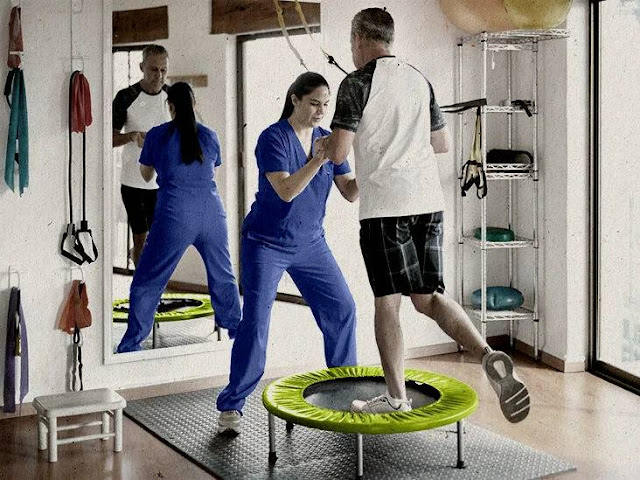Featured
- Get link
- X
- Other Apps
How to Treatment Modalities in Sports Medicine? And, More About It
Medical imaging is a cornerstone of sports medicine, playing a vital role in the diagnosis, action, and rehabilitation of athletic injuries. By providing detailed insights into the body's structures, medical imaging helps healthcare providers make accurate and informed decisions, guiding athletes on their path to recovery and return to play.
Medical imaging not only aids in diagnosing athletic
injuries but also guides treatment decisions. Common treatment modalities
include:
Physical Therapy: Many athletes benefit from structured
physical therapy programs to regain strength, flexibility, and function.
Rest and Immobilization: In some cases, rest and
immobilization are necessary for healing. Splints, braces, or casts may be
used.
Surgery: Athletes with severe injuries, such as torn
ligaments or complex fractures, may require surgical intervention.
Injections: Corticosteroid injections, platelet-rich plasma
(PRP) therapy, and other injections are used to manage inflammation and promote
healing.
Rehabilitation and Strength Training: Athletes often require
tailored rehabilitation programs to regain their pre-injury level of fitness
and performance.
Pain Management: In cases of chronic pain, healthcare
providers may recommend pain management techniques, including medications and
non-pharmacological approaches.
How to Return to Play Criteria?
One of the key roles of medical imaging in sports medicine
is helping determine when an athlete is ready to return to play. This decision
is based on several factors:
Healing Progress: Imaging is used to monitor the progress of
healing, ensuring that the injured area is sufficiently repaired.
Pain and Function: An athlete's pain level, range of motion,
and functional abilities are assessed to determine their readiness for return.
Objective Testing: Functional tests, such as strength and
range of motion measurements, are used to objectively assess an athlete's
readiness.
Sport-Specific Demands: The demands of the athlete's
specific sport and position are taken into account, as different sports require
different levels of physical exertion and movement.
Psychological Readiness: Athletes must also be
psychologically ready to return to play and confident in their abilities.
What are The Future of Sports Medicine Imaging?
The future of medical imaging in sports medicine holds
exciting possibilities:
Advanced Imaging Technologies: Evolving imaging
technologies, including improved MRI and ultrasound systems, will provide even
more detailed and accurate images.
Portable Imaging: The development of portable imaging
devices will allow for on-field assessments and immediate injury evaluation.
AI and Machine Learning: AI and machine learning algorithms
will play an increasing role in image analysis, enabling quicker and more
accurate diagnoses.
Remote Consultations: Telemedicine and image sharing will
continue to grow in importance, allowing athletes to access expertise from
around the world.
Preventive Imaging: Advanced imaging will be used for
preventive measures, identifying potential issues before they lead to injuries.
Conclusion
Medical imaging is a cornerstone of sports medicine, playing
a crucial role in the diagnosis, treatment, and rehabilitation of athletic
injuries. By providing detailed insights into the body's structures, medical
imaging helps healthcare providers make accurate and informed decisions,
guiding athletes on their path to recovery and return to play. As technology
advances and telemedicine becomes more prevalent, the future of sports medicine
imaging holds the promise of even more precise diagnoses and improved outcomes
for athletes at all levels.
- Get link
- X
- Other Apps
Popular Posts
How robots help design our beauty products
- Get link
- X
- Other Apps



Comments
Post a Comment